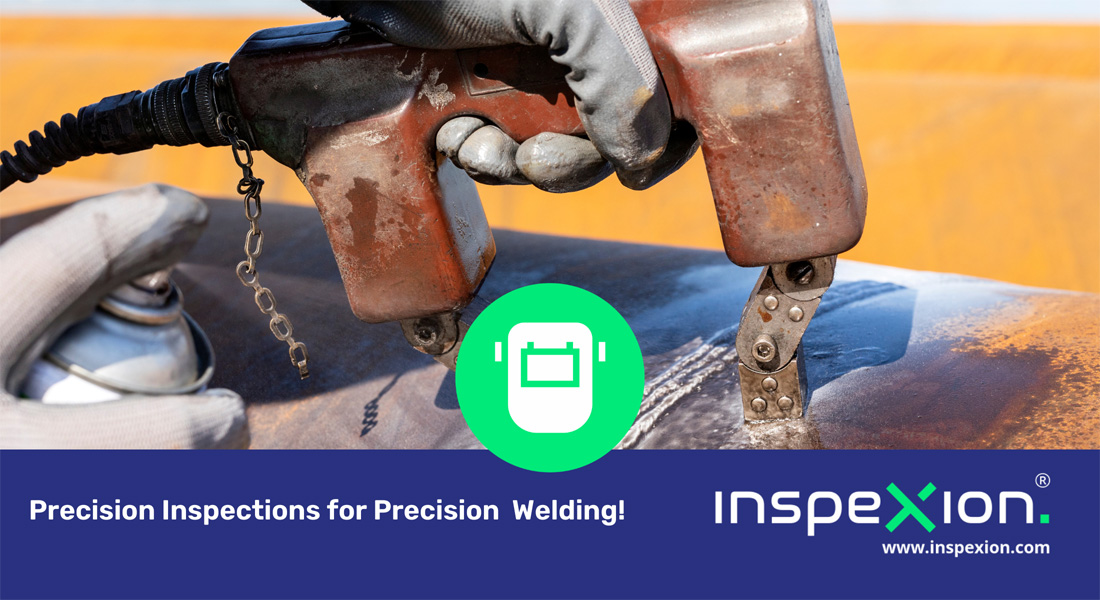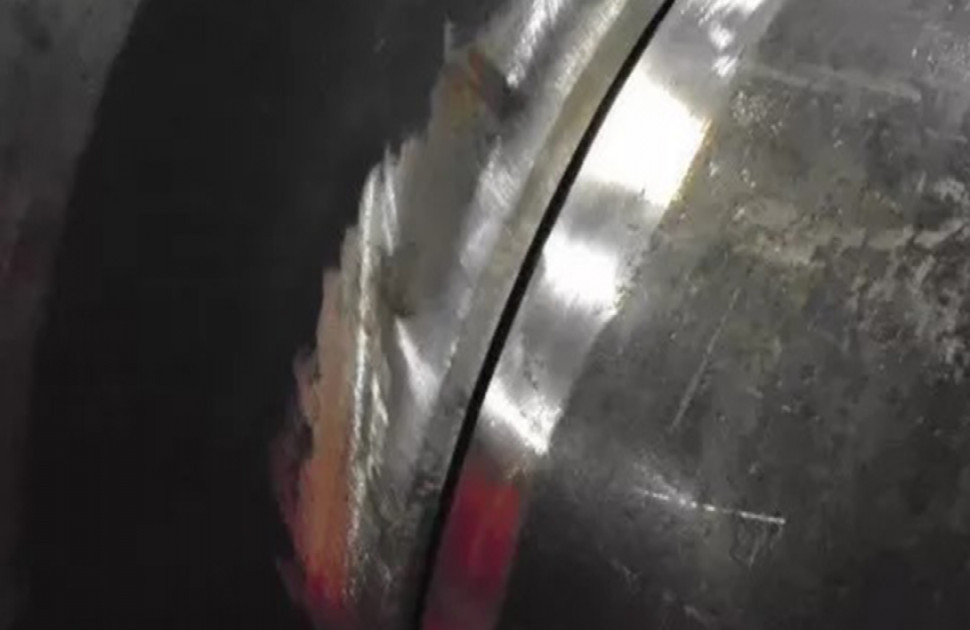Leading Factors to Select Professional Welding Inspection Milwaukee Services
Leading Factors to Select Professional Welding Inspection Milwaukee Services
Blog Article
A Comprehensive Overview to Welding Assessment Techniques and Ideal Practices for Quality Control in Manufacture Projects
Welding evaluation works as an essential pillar in guaranteeing the structural integrity and safety and security of produced jobs. Using a selection of techniques-- varying from aesthetic assessments to sophisticated techniques like ultrasonic and radiographic screening-- supplies essential understandings into potential defects that might threaten stamina. Establishing reliable techniques and a durable top quality administration system can enhance conformity and reliability. The complexities of these techniques and their implementation often elevate essential questions regarding the criteria and tools needed for ideal results. What certain methodologies will be most efficient in your projects?
Relevance of Welding Examination
Welding assessment is a critical element in ensuring the stability and safety of welded structures. The procedure includes a methodical evaluation of welds to determine any defects that might compromise the stamina and toughness of the end product. Effective assessment is vital not just for conformity with market criteria and guidelines yet also for protecting the health and wellness of personnel and the public.

Furthermore, welding assessment acts as a valuable device for continual renovation in construction procedures. By recognizing persisting problems, organizations can apply rehabilitative actions, leading to enhanced training for welders and far better total methods. Ultimately, focusing on welding assessment promotes a culture of quality control, making sure that projects meet both client assumptions and governing needs. This aggressive approach is critical for attaining excellence in welding and manufacture.
Common Welding Examination Methods
Various techniques are utilized to examine welds, each tailored to find specific sorts of defects and guarantee quality. Among one of the most frequently made use of approaches are aesthetic evaluation, ultrasonic testing, radiographic screening, magnetic bit screening, and color penetrant screening.
Aesthetic evaluation is one of the most straightforward method, permitting assessors to determine surface area irregularities such as fractures, porosity, and damaging. Ultrasonic screening utilizes high-frequency sound waves to detect interior flaws, giving a comprehensive analysis of weld integrity. Radiographic screening uses X-rays or gamma rays to develop photos of the weld, disclosing interior issues that are not noticeable to the nude eye.
Magnetic fragment testing is specifically reliable for ferromagnetic products, determining surface area and near-surface problems by applying electromagnetic fields and using fine bits that indicate irregularities. Dye penetrant screening involves using a colored color to the weld surface area, which leaks into fractures and is disclosed under ultraviolet light, making it easy to identify issues.
Each of these techniques plays a vital function in preserving welding quality, and the option of a proper approach relies on the certain needs of the fabrication job, including material type, weld arrangement, and the desired degree of evaluation.
Necessary Examination Devices


Determining tools, consisting of calipers, determines, and rulers, are crucial for confirming resistances and dimensions. These tools assist ensure that welds meet the required specifications for stamina and toughness. Additionally, ultrasonic screening devices are used to detect interior flaws without compromising the integrity of the weld. This non-destructive screening technique is essential for recognizing issues that might not show up on the surface.
An additional essential tool is the hardness tester, which examines the mechanical residential properties of a weld and determines its viability for specific applications. Finally, welding inspection software application aids in documenting findings, facilitating information evaluation, and guaranteeing conformity with sector requirements. With each other, these important assessment devices form an extensive collection that supports the welding examination process, inevitably contributing to the quality assurance of construction tasks.
Ideal Practices for Quality Control
In the quest of top quality assurance, implementing anchor best practices is necessary for accomplishing trustworthy and regular welding outcomes. Establishing a detailed welding quality administration system (WQMS) is fundamental. This system needs to include defined procedures, requirements, and documentation methods that assist every phase of the welding procedure.
Regular training and qualification of welding employees are critical. Skilled welders with updated expertise of methods and precaution add significantly to high quality. Performing pre-welding examinations guarantees that products and equipment fulfill specified criteria, lowering the possibility of defects.
Incorporating real-time surveillance during the welding procedure permits for prompt detection of abnormalities, allowing rehabilitative actions to be taken without delay. Post-welding examinations, consisting of visual checks and non-destructive screening (NDT), are critical in verifying weld integrity and compliance with industry requirements.
Additionally, keeping precise documents of assessments, weld specifications, and rehabilitative actions fosters a culture of accountability and continuous enhancement. Involving stakeholders in normal top quality reviews can also improve the total effectiveness of quality assurance procedures. By adhering to these finest methods, organizations can significantly elevate their welding quality control initiatives, thereby making certain task success and customer complete satisfaction.
Enhancing Safety and Conformity
Achieving high requirements in welding quality control normally lines up with the critical of boosting security and conformity within the market. Effective welding inspection techniques are crucial in making certain and identifying possible hazards that all processes comply with regulative requirements. These techniques not just offer to keep architectural stability yet additionally safeguard the health and safety and security of workers entailed in construction jobs.
Executing rigorous inspection procedures, such as aesthetic evaluations, non-destructive testing (NDT), and extensive documentation, establishes a culture of safety and security and accountability. Educating welders and examiners in present safety regulations and best techniques is essential. This guarantees that all staff member know prospective risks and are equipped to mitigate them.
In addition, compliance with market criteria, such as those set by the American Welding Culture (AWS) and the International Company for Standardization (ISO), is non-negotiable. Regular audits and analyses assist determine voids in safety and security procedures and promote constant improvement - Welding Inspection Milwaukee. Inevitably, a commitment to boosting safety and security and compliance not just fosters a safer working environment yet likewise results useful link in exceptional quality end results and lowered responsibility for companies participated in welding fabrication
Verdict

Welding inspection offers as a basic pillar in making sure the architectural honesty and safety and security of produced projects.Welding inspection is a critical component in making sure the stability and security of bonded frameworks. Ultimately, focusing on welding assessment fosters a society of quality assurance, guaranteeing that jobs fulfill both consumer assumptions and governing requirements. Together, these essential inspection devices develop an extensive toolbox that sustains the welding assessment process, ultimately contributing to the quality assurance of fabrication jobs.
In conclusion, reliable welding evaluation is essential for ensuring the structural integrity and safety and security of made jobs. click here now Welding Inspection Milwaukee.
Report this page